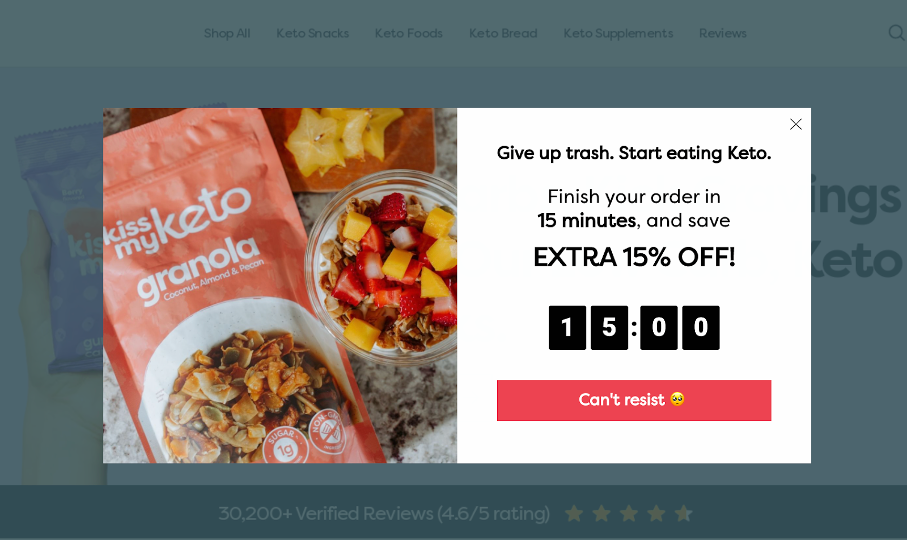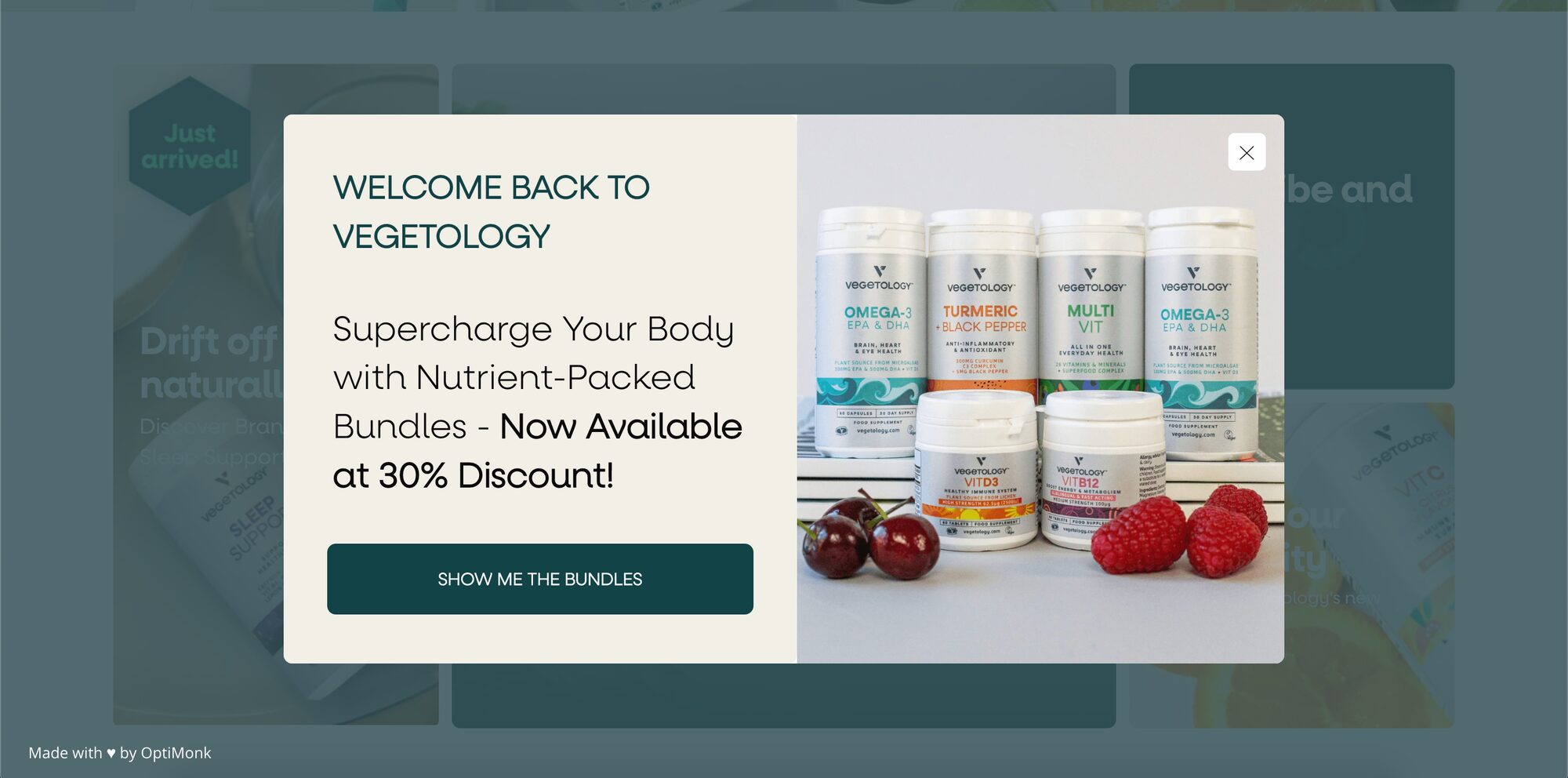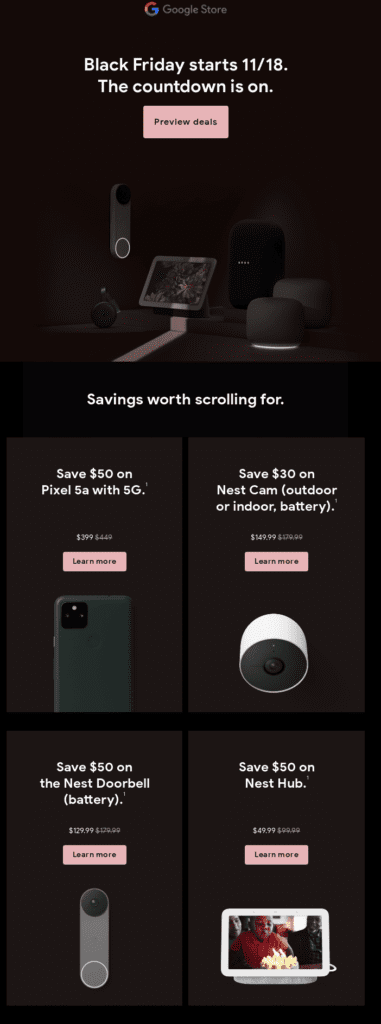- Blog
- 11 FOMO Marketing Strategy Ideas to Boost Your Online Revenue in 2025
11 FOMO Marketing Strategy Ideas to Boost Your Online Revenue in 2025
-
Nikolett Lorincz
- Marketing
- 6 min read
Table of Contents
Grabbing your customers’ attention isn’t easy. It all boils down to employing the right marketing tactics. And one strategy that stands out is FOMO marketing.
FOMO marketing campaigns are about leveraging the fear of missing out to encourage customers to make immediate purchasing decisions.
In this article, we’ll discuss what FOMO marketing is and explore its benefits and ethical considerations. We’ll also show you the best FOMO marketing examples to inspire your next campaign.
Let’s jump in!
What is FOMO marketing?
Before we get into the details, let’s be clear about what FOMO marketing is.
Short for “fear of missing out,” FOMO marketing is a strategic approach that capitalizes on potential customers’ innate fear of missing out on opportunities.
FOMO marketing uses tactics like limited-time offers, countdown timers, and exclusive deals to create a sense of urgency and scarcity.
Essentially, FOMO marketing taps into the psychological urge to act quickly to avoid missing out on a desirable opportunity. This trigger drives consumers to make impulse purchases.
What are the benefits of a FOMO marketing campaign?
FOMO marketing isn’t just a buzzword.
Implementing a FOMO marketing campaign can be a game-changer for many businesses, especially if they’re seeking to boost conversions.
Let’s explore the benefits of embracing FOMO marketing strategies:
- Urgency and scarcity drive action: FOMO marketing leverages the psychological principles of urgency and scarcity to prompt immediate action by potential customers.
- Increased conversion rates: A FOMO marketing tactic can motivate indecisive shoppers to finalize their purchase decisions quickly, resulting in higher conversion rates.
- Enhanced brand engagement: Fostering a sense of anticipation and excitement around your brand cultivates stronger connections with your target audience, leading to increased brand loyalty and advocacy.
- Better customer retention: Implementing FOMO marketing strategies isn’t just about attracting new customers–it also plays a crucial role in retaining existing ones. By continuously offering exclusive perks, you can foster a sense of belonging and appreciation. This helps to reduce churn rates and foster long-term customer relationships.
Is it ethical to create FOMO in your marketing campaigns?
There’s no doubt that FOMO marketing can be a powerful tool for driving more sales. But it’s essential to consider its ethical implications.
Some critics argue that FOMO marketing techniques manipulate consumers’ emotions and exploit their vulnerabilities.
However, ethical FOMO marketing campaigns focus on creating genuine value and urgency rather than deceiving or coercing consumers.
It involves transparent communication, honest messaging, and a commitment to delivering on promises made.
By prioritizing consumer trust and satisfaction, you can ensure that your FOMO marketing strategy is ethical and sustainable.
11 FOMO marketing examples
So, how do you take advantage of the FOMO marketing technique? Let’s have a look at some great FOMO marketing examples.
1. Earth Harbor’s limited-time offer strategy
Earth Harbor, a sustainable skincare brand, has mastered the art of FOMO marketing through limited-time offers.
Understanding that website visitors are more likely to act when faced with the prospect of missing out on a great deal, Earth Harbor uses a “Limited time only” offer on their popup.
Earth Harbor crafted a compelling promotion: they offered a free serum for visitors in exchange for becoming an Earthlove member. This strategy helped them to get more subscribers and also drove more sales.

2. MeUndies’ flash sale strategy
Next up on our FOMO marketing examples list is MeUndies’ strategy.
They decided to use a flash sale to capture the attention of their target audience and compel them to take action immediately.
MeUndies effectively communicated this flash sale through an email newsletter, which you can see below.

3. Kiss My Keto’s countdown timer strategy
Kiss My Keto used countdown timers to leverage the power of FOMO.
When visitors who had already added items to their carts were about to leave the Kiss My Keto website without finishing their purchase, they were greeted with an exit-intent popup featuring prominently displayed countdown timers.
This created a strong sense of urgency and encouraged shoppers to act quickly. In fact, this campaign had a 15.05% conversion rate.

4. Obvi’s limited stock alert strategy
Another way to create FOMO is to notify customers when there’s limited stock.
Take this exit-intent popup from Obvi as an example. The “Hurry, stock is limited!” message is a strong incentive for customers to reconsider their decision to leave and instead take immediate action to secure their purchase before the product runs out.

5. Alp N Rock’s exclusive access strategy
Most ecommerce sites have a newsletter list. By offering exclusive access to new products or services to VIP customers or subscribers, you can create a sense of exclusivity and privilege–another thing many customers don’t want to miss out on!
That’s exactly why Alp N Rock decided to incentivize customers to subscribe with VIP promotions and a first look at new arrivals.

FOMO marketing campaigns like this one can also contribute to the brand’s long-term success as customers who feel valued and appreciated are more likely to become repeat purchasers and brand advocates.
6. TheSTEMKids’ social proof strategy
Did you know that 75% of consumers search for reviews and testimonials before buying something?
Consumers often rely on the experiences of others to inform their purchasing decisions. TheSTEMKids team knew that and decided to showcase positive feedback from satisfied customers.
Social proof helps to demonstrate the popularity and demand for your products or services, triggering FOMO.

7. Butter’s early bird discount strategy
Butter, a virtual collaboration platform, wanted to leverage FOMO by rewarding early adopters with special discounts.
To do this, Butter sent a strategic promotional email marketing campaign to its subscribers offering an exclusive 30% discount to those who claim the early bird plan.
This strategy not only incentivizes immediate action but also makes its premium plans more appealing and accessible to users.

8. MotionGrey’s gamification strategy
Tired of boring marketing campaigns?
Try incorporating gamified elements like a lucky wheel!
With this lucky wheel popup, MotionGrey offers customers a unique opportunity to interact with the brand in a fun way.
They’re invited to spin the wheel and win exciting prizes or discounts. This helps to leverage FOMO and drive engagement.

9. Oobli’s last-chance reminder strategy
Oobli sent a strategic last-chance reminder email marketing campaign to capitalize on limited-time promotions.
They used language that emphasized the urgency of the situation with the goal of compelling customers to take immediate action.
The tone of the copy, like “Almost Gone!” and “hurry — we’re selling out FAST” immediately captures attention and conveys the limited availability of the promotion. This is a great way to create a sense of urgency.

10. Vegetology’s personalized recommendation strategy
Recognizing the power of data-driven personalization in enhancing the shopping experience and driving sales, Vegetology used OptiMonk to show a personalized message for returning visitors.
The results of this campaign (14.59% click-through rate) indicate that the personalized recommendations resonated well with returning visitors, prompting them to take action and explore the bundle options presented to them.

11. Google Store’s sneak peek strategy
Another great way to leverage FOMO is to provide sneak peeks or behind-the-scenes looks at upcoming releases or promotions.
This helps generate anticipation among your target audience.
Recognizing that consumers are often motivated by the thrill of discovering something new, Google Store sent an email marketing campaign to its subscribers promoting its upcoming Black Friday campaign.

FAQ
Is FOMO marketing suitable for all types of businesses?
FOMO marketing can be effective for a wide range of businesses, particularly those offering products or services where urgency or exclusivity can be emphasized. However, it’s essential to tailor FOMO strategies to align with your brand identity and audience.
How can I ensure that my FOMO marketing campaigns are ethical?
Ethical FOMO marketing campaigns prioritize transparency, honesty, and genuine value creation. To keep things ethical, you’ll want to avoid deceptive tactics and false scarcity claims. Instead, focus on delivering real value to your customers, starting a meaningful conversation, and fostering trust and authenticity in your brand messaging.
What if my target audience doesn’t respond well to FOMO tactics?
Every audience is unique, so it’s essential to monitor feedback and adjust your strategies accordingly. If FOMO ads don’t resonate with your audience, consider alternative approaches that align better with their preferences and values.
Can FOMO marketing be used in conjunction with other marketing strategies?
Absolutely! FOMO marketing can complement other marketing strategies such as content marketing, influencer marketing, and social media advertising. By integrating FOMO tactics strategically into your broader marketing efforts, you can maximize their impact and effectiveness.
How frequently should I run FOMO marketing campaigns?
The frequency of FOMO marketing campaigns depends on various factors, including your business objectives, your audience’s preferences, and industry norms. Avoid overusing FOMO advertising tactics, as this can lead to audience fatigue or diminish the effectiveness of your campaigns over time. Instead, aim for a balanced approach that maintains a sense of urgency without overwhelming your audience.
Wrapping up
FOMO marketing techniques present an enticing opportunity to boost online revenue by leveraging consumers’ fear of missing out.
However, it’s essential to implement these strategies ethically, prioritizing transparency and genuine value creation.
Ready to get started with your own FOMO campaigns? Create a free OptiMonk account and start creating a sense of urgency with popups!
Migration has never been easier
We made switching a no-brainer with our free, white-glove onboarding service so you can get started in the blink of an eye.

What should you do next?
Thanks for reading till the end. Here are 4 ways we can help you grow your business:
Boost conversions with proven use cases
Explore our Use Case Library, filled with actionable personalization examples and step-by-step guides to unlock your website's full potential. Check out Use Case Library
Create a free OptiMonk account
Create a free OptiMonk account and easily get started with popups and conversion rate optimization. Get OptiMonk free
Get advice from a CRO expert
Schedule a personalized discovery call with one of our experts to explore how OptiMonk can help you grow your business. Book a demo
Join our weekly newsletter
Real CRO insights & marketing tips. No fluff. Straight to your inbox. Subscribe now
Nikolett Lorincz
- Posted in
- Marketing
Partner with us
- © OptiMonk. All rights reserved!
- Terms of Use
- Privacy Policy
- Cookie Policy
Product updates: January Release 2025








